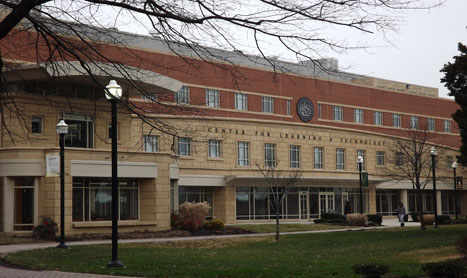BALTIMORE – In a six-week trial that ended Thursday over whether Maryland shortchanges its historically black universities, the state argued that it has given these schools fair funding as well as special consideration in recent years.
“The HBCUs (Historically Black Colleges and Universities) have been funded fairly,” said Craig Thompson, attorney for the state, stressing the importance of every public college in Maryland.
But the plaintiffs, members of the Coalition for Equity and Excellence in Higher Education, say that historically black colleges in Maryland are treated as inferiors to their traditionally white counterparts, and that policies currently in effect have caused colleges to remain segregated.
The Coalition sued the Maryland Higher Education Commission in 2006, seeking to “make the historically black colleges and universities comparable and competitive with traditionally white institutions,” said plaintiff’s attorney, John Brittain. The suit went to trial in U.S. District Court in Baltimore Jan. 3.
A victory by the coalition could mean additional enhancement and building funds, as well as an end to unnecessary program duplication between historically black and traditionally white schools.
Maryland’s four historically black colleges are Bowie State University, Morgan State University, Coppin State University and the University of Maryland Eastern Shore. The universities themselves are not directly involved in the lawsuit, but the plaintiffs include current students and alumni.
The Coalition says that Maryland’s black schools have been limited by duplication of their academic programs at white institutions, because it gives non-black students less incentive to choose a historically black college.
“If you duplicate a program in a white school … then you are perpetuating that old dual system” of segregation, said Brittain. “Black schools remain nearly all black.”
Programs approved for addition that already existed at the historically black schools include advanced study in early childhood education at Towson University, a masters in landscape architecture at the University of Maryland College Park and a bachelor of fine arts in visual arts at the
University of Maryland Baltimore County, according to a presentation from University of California Los Angeles sociology professor Walter R. Allen, who testified for the plaintiffs.

Despite this type of duplication, Deborah Smith, a 30-year-old senior at Bowie State, said a specific academic program was what attracted her to the university.
“They had a huge broadcast journalism degree that most schools don’t have,” said Smith. “I actually think the opportunities here are a bit more because it’s a smaller school.”
Coppin State was allocated the highest amount of state funding per full-time equivalent student and Morgan State the third highest amount in the 2013 Maryland Executive Budget. The University of Maryland College Park received the second highest.
College Park is classified as a research intensive university, along with the University of Maryland Baltimore, which means that while it requires more funding, it also generates funding, testified Joe Vivona, the University System of Maryland’s chief operating officer.
All four of Maryland’s historically black colleges received greater funding allocations per full-time equivalent student than Towson University and Salisbury University, two of their traditionally white counterparts.
“By and large we tend to reduce HBCU budgets at a lesser rate,” Vivona said.
A major concern when it comes to state funding for schools is the condition of academic buildings. Vivona said the University System of Maryland has a current backlog of about $1.5 billion in deferred building maintenance.
“No institution is without a backlog,” he said.
However he added that the schools with the highest levels of deferred maintenance are College Park, Towson University and the University of Maryland Baltimore. He attributed this to the age of these universities’ buildings.
“There are a lot of repairs that could be completed if they had the funding,” said 28-year-old Bowie State senior Tamethia Chapman, who said she chose the university for its competitive tuition rate and financial aid, as well as its visual arts program.
State records show that Bowie State has the lowest level of deferred maintenance in the University System of Maryland, at $16.2 million.
“We might not be the nicest university, but we have what we need,” said 19-year-old Bowie State sophomore Jameel Delpeche, who also chose the college for its affordability.
Vivona said that building funds come from the state budget and from tuition revenue.
However, at historically black institutions, whose mission includes a focus on students from low-income backgrounds, more students use financial aid services to help pay for tuition.
The black colleges in Maryland tend to have significantly higher percentages of students in need of financial aid. At Bowie State, Morgan State and the University of Maryland Eastern Shore, at least 90 percent of students receive financial aid, compared to percentages in the 70s at College Park, Baltimore County and Towson.
Brittain said this aspect of the historically black institutions’ mission, along with the fact that they aim to educate more “not-college-ready students” drives up the universities’ costs.
While more students at Maryland’s historically black colleges require financial aid than at traditionally white schools, more receive federally funded Pell Grants as well to subsidize their education costs.
At Morgan State, Bowie State, Coppin State and Eastern Shore, the average percentage of full-time, beginning students receiving Pell Grants in 2009-2010 was 55.5, versus 26.2 at the state’s four-year public, traditionally white colleges, based on National Center for Education Statistics records.
In addition to outside aid for students, black colleges in Maryland have received funding through state programs and faced fewer budget cuts during the recession, said Craig Thompson, attorney for the state of Maryland.
Thompson also said that programs have been denied at Towson, Salisbury, Baltimore County and Frostburg State due to their existence at black colleges in Maryland.
“All of the schools within the system are important,” said Thompson. “All of the schools within the system are unique and have unique missions.”
The trial ended Thursday. The court will set a date for closing arguments, which Thompson said may not take place for a few months.


You must be logged in to post a comment.